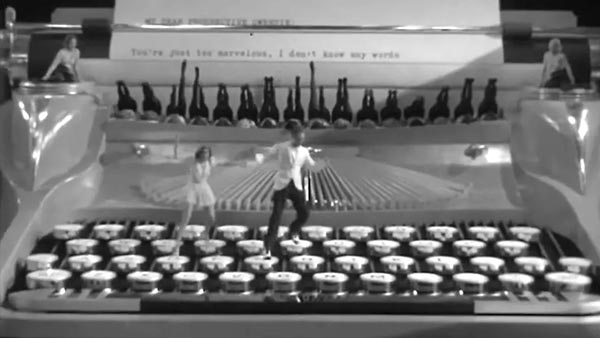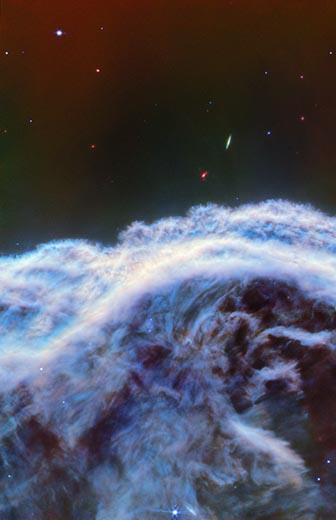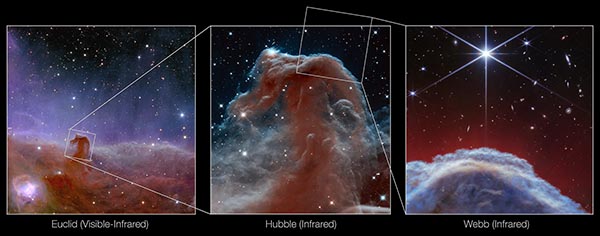
Magenta Alert!
Pretty much all of us in the graphic arts industry are familiar with magenta as one of the four basic process colors, but now it’s going to be associated with climate danger. Says the AP:
The National Weather Service and the Centers for Disease Control and Prevention on Monday — Earth Day — presented a new online heat risk system that combines meteorological and medical risk factors with a seven-day forecast that’s simplified and color-coded for a warming world of worsening heat waves.
And, as it happens, magenta has been designated the “worst and deadliest” of the heat threat categories, meaning “rare and/or long-duration extreme heat with little to no overnight relief.”
It’s a step higher than red, considered a major risk, which hurts anyone without adequate cooling and hydration and has impacts reverberating through the health care system and some industries. Red is used when a day falls within the top 5% hottest in a particular location for a particular date; when other factors come into play, the alert level may bump even higher to magenta, weather service officials said.
Via NOAA, the categories are:

Maybe we can use cyan for cold threats.
If they wanted to get more specific, they could start rating heat threats using Pantone numbers.
In the Country of Last Things
RIP author Paul Auster, one of our favorite contemporary writers here in the Bunker, ever since his debut in 1985–86 with the three novels that would comprise The New York Trilogy. Says the New York Times:
Paul Auster, the prolific novelist, memoirist and screenwriter who rose to fame in the 1980s with his postmodern reanimation of the noir novel and who endured to become one of the signature New York writers of his generation, died of complications from lung cancer at his home in Brooklyn on Tuesday evening. He was 77.
…Though a New Jersey native, he became indelibly linked with the rhythms of his adopted city, which was a character of sorts in much of his work — particularly Brooklyn, where he settled in 1980 amid the oak-lined streets of brownstones in the Park Slope neighborhood.
As his reputation grew, Mr. Auster came to be seen as a guardian of Brooklyn’s rich literary past, as well as an inspiration to a new generation of novelists who flocked to the borough in the 1990s and later.
The Times also rounds up some of his most acclaimed books, although we would heartily recommend The Music of Chance, which was also adapted into a 1993 movie starring James Spader. His final novel, Baumgartner, published last year, is also worth checking out.
You’re Just My Type
Ever seen the 1937 movie musical Ready Willing and Able? No, nor have we. Starring Ruby Keeler and Lee Dixon, and directed by Ray Enright, it involves two songwriters trying to cast a play. One sequence, via Laughing Squid, features a musical number in which Keeler and Dixon dance on a giant typewriter while “the other female dancers in the used their legs as strikers to the page.” (Yeah, some of these movies haven’t aged well.)

Don’t try this at home.
Watch the whole clip:
Blue Harvest
Tomorrow is Star Wars Day (i.e., May the Fourth Be with You) and to celebrate, dairy producer TruMoo has introduced Blue Milk. (You may recall, in the original Star Wars—aka Episode IV: A New Hope—Luke Skywalker sits down to breakfast with his aunt and uncle and has a tall glass of blue milk, obtained ostensibly by milking banthas, the local fauna of Tatooine.) It’s a 1% fat, vanilla-flavored milk available in half-gallon sizes.
Blue Milk is available exclusively at STAR WARS: Galaxy’s Edge® in Disney Parks—and now for a limited time in your local dairy department!

For those curious as to what Blue Milk tastes like, Nerdist had a go:
Of course, we’ve never tasted Blue Milk fresh from a bantha. So we couldn’t say how grocery store Blue Milk compares to the true original. But what we can say is that Star Wars’ new TruMoo Blue Milk, fresh from the store or, in this case, the big Blue Milk fridge, tastes, well, galactically good. No offense to cows, but not only is the bantha’s Blue Milk a better color than normal milk, but it’s also basically a milkshake.
Now, if you ever encountered magenta milk, beware, as it’s probably too hot to drink.
Horsing Around
Tomorrow is also Kentucky Derby day, which is known for two things: the mint julep (which is a regrettable waste of bourbon, in our opinion…) and hats. Panera can’t help you with the former, but as for the latter, well… Says Food & Wine:
Many of the hats you’ll see around the race track were months in the making and cost hundreds, if not thousands, of dollars. This year, Panera has a particularly fascinating hat in store for the most exciting two minutes in sports that’s potentially going to blow all those high-priced chapeaus out of the water—a fascinator-style hat made from a bread bowl.

We hasten to point out that the “Bread Hat” is not made of actual bread.
The hat’s centerpiece is a 3D-printed replica of a bread bowl surrounded by colorful ostrich feathers — because how else would one surround a bread bowl designed to be worn as a hat? The green-forward bouquet of feathers lends a nod to the brand’s broccoli and cheddar soup, so much so that you’d be forgiven for expecting some to be hiding inside the bowl.
If you think you’d look fetching in one of these, it’ll set you back $21 via ThePaneraShop.com. Panera says that the price is a riff on the “21 new and enhanced dishes” on its newly-revamped menu. Marketers; boy, I don’t know.
Poetry in Motion
Most longtime readers of Around the Web (both of you) probably have grokked that we tend to be fairly skeptical of the various claims surrounding AI as either the “greatest thing ever” or “most dangerous thing ever.” At present, it’s all pretty much just amusing most of the time (like the Internet of Things—remember that?). But one AI-based application that struck us as kind of cool is, via Boing Boing, a “poetry camera.”
Created by NY-based artists Kelin Carolyn Zhang and Ryan Mather, the Poetry Camera is an open source technology that lands halfway between a Polaroid camera and one of those buskers hocking poetry written in real-time on a typewriter in the park. Basically: you take a photograph with the camera, and then a small chip inside the camera uses the visual data from that picture to algorithmically generate a poem, based on that photo.
Check out a video demo on Instagram.
A New G in Town
We’re still trying to get true 5G wireless technology up and running, but over in Japan, a 6G device has been invented. Says LiveScience:
A consortium of companies in Japan has built the world's first high-speed 6G wireless device, capable of transmitting data at blistering speeds of 100 gigabits per second (Gbps) at more than 300 feet (90 meters) — up to 20 times faster than 5G.
These data transfer speeds are equivalent to transferring five HD movies wirelessly per second, and, according to Statista, up to 500 times faster than average 5G T-Mobile speeds in the U.S.
Assuming you could find five movies you’d want to transfer. As for where we stand 5G-wise:
Rolled out in 2019, 5G is the current state-of-the-art wireless communication standard and is used by almost all new smartphones, for example. Average T-Mobile speeds in the U.S. are approximately 204.9 megabits per second (Mbps), while the theoretical maximum 5G speed is at least 10 Gbps.
As for 6G, not a massive range (yet):
The results of the new tests, announced April 11 in a joint statement, show that the consortium’s wireless device transmitted data at 100 Gbps indoors over the 100 gigahertz (GHz) band and outdoors in the 300 GHz band — which sits below infrared in the electromagnetic spectrum. The tests were conducted over 328 feet (100 meters), consortium representatives said in the statement.
When can we expect 6G? Take this with a grain of salt:
scientists are already working on building the sixth generation of this standard, 6G, with the infrastructure in the works ahead of rollout by the early 2030s, according to the GSM Association (GSMA) — where GSM stands for Global System for Mobile.
Your mileage may vary, as they say.
Rosey the Riveting
If you ever watched the cartoon series The Jetsons, you may recall they had a robot housekeeper named Rosey:

Back in the 70s, we all thought this was sci-fi. But, well, science fiction often has a nasty tendency to become science fact. So, via Core77, Chinese startup Astribot has developed a domestic robot (called Astribot S1) that is capable of performing a variety of household tasks, such as preparing food, vacuuming, ironing, folding clothes, mending furniture, and a host of other things.

At press time, the company has released virtually no info about the robot aside from the video. And based on the footage, we assume it’s currently an upper-body creation only.
The video manages to be fascinating and terrifying at the same time.
Astribot’s video is perhaps a response to competitor Sanctuary AI’s video from a few weeks ago. Sanctuary's update shows their ’bot doing fewer tabletop tasks, but with more fluidity, and also reportedly autonomously:
The word “autonomously” is a little scary…
Mousing Around
Well this would be a freakish thing to find scampering about the kitchen. From Freethink:
In an attempt to study the spine, scientists in Portugal accidently created a mouse embryo with an extra pair of hind legs, where its genitals should be.
As one does. A six-legged mouse? That would be creepy. On the plus side, it sounds like it would never be able to reproduce.
For their study, published in Nature Communications, the team inactivated the Tgfbr1 gene in mouse embryos that were halfway through development.
They expected that this might have some effect on the rodents’ spines. What they weren’t expecting was for one of their embryos to grow an extra pair of hind limbs where its external genitalia should have been.
“[We were] very surprised,” lead researcher Moisés Mallo told Newsweek.
As one would be.
Upon further study, the Portuguese team discovered that the Tgfbr1 protein affects the cells that make up these structures, altering the way the DNA in them folds. By inactivating the Tgfbr1 gene, they affected the expression of other genes in the cells, leading to the structural abnormality.
“I would actually expect the same would happen in humans, but of course, this cannot be experimentally tested,” said Mallo.
Although think what it would mean for dancing.
Looking ahead: The researchers are hopeful that their study will improve our understanding of abnormalities that occur during human embryo development, given that mammals share many of the same early developmental pathways.
They plan to continue studying Tgfbr1 to see how it might affect the development of other body parts, including the immune system, as well as explore its potential impact on the structure of DNA in cancer cells and their ability to spread.
And the development of exotic pets.
Around the Webb, Part the Infinity: More Horsing Around
One of the most distinctive objects in the night sky is the Horsehead Nebula (aka Barnard 33), located 1,300 light years away in the section of the constellation of Orion known as the Orion B molecular cloud. The James Webb Space telescope zoomed in on a portion of the horse’s “mane”—about 0.8 light years wide—and captured much finer details of the nebula than ever before.

Caption from NASA: This image of the Horsehead Nebula from NASA’s James Webb Space Telescope focuses on a portion of the horse’s “mane.” It was taken with Webb’s MIRI (Mid-Infrared Instrument). Mid-infrared light captures the glow of substances like dusty silicates and soot-like molecules called polycyclic aromatic hydrocarbons. In this image, blue represents light at wavelengths of 5.6, 7.7, and 10 microns; green is 11, 12, and 15 microns; and red is 18, 21, and 25 microns. NASA, ESA, CSA, K. Misselt (University of Arizona) and A. Abergel (IAS/University Paris-Saclay, CNRS)
Thanks to Webb’s MIRI and NIRCam instruments, an international team of astronomers has revealed for the first time the small-scale structures of the illuminated edge of the Horsehead. As UV light evaporates the dust cloud, dust particles are swept out away from the cloud, carried with the heated gas. Webb has detected a network of thin features tracing this movement. The observations have also allowed astronomers to investigate how the dust blocks and emits light, and to better understand the multidimensional shape of the nebula.
They also compare the new image to previous images of the nebula:

Caption from NASA: This image showcases three views of one of the most distinctive objects in our skies, the Horsehead Nebula. The first image (left), released in November 2023, features the Horsehead Nebula as seen in visible light by ESA’s Euclid telescope, which has contributions from NASA. The second image (middle) shows a view of the Horsehead Nebula in near-infrared light from NASA's Hubble Space Telescope, which was featured as the telescope’s 23rd anniversary image in 2013. This image reveals a beautiful, delicate structure that is normally obscured by dust. The third image (right) features a new view of the Horsehead Nebula from NASA's James Webb Space Telescope’s NIRCam (Near-Infrared Camera) instrument. ESA/Euclid/Euclid Consortium/NASA, image processing by J.-C. Cuillandre (CEA Paris-Saclay), G. Anselmi, NASA, ESA, and the Hubble Heritage Team (AURA/STScI), ESA/Webb, CSA, K. Misselt (University of Arizona), M. Zamani (ESA/Webb)
The things we can do.
Yell—OW!—Stone Park
Here’s one of the looniest headlines we’ve seen in a while. From CNN: “Man accused of kicking a bison at Yellowstone National Park is injured and arrested.”
Kicking a bison? First of all…why? And second…who would think that was going to end well?
park rangers went to the area after getting “a report of an individual who harassed a herd of bison and kicked a bison in the leg. They located the suspect’s vehicle near the West Entrance and stopped it in the town of West Yellowstone, Montana.”
Ah:
Yoder faces four charges stemming from his arrest, the release said. They are: Being under the influence of alcohol to a degree that may endanger oneself
OK, ’nuff said.
Pro tip: leave bison alone.
Fully grown male bison can reach up to 2,000 pounds (900 kilograms), the park says. Despite their bulk, they are considered agile and can run up to 30 miles per hour (48 kilometers per hour). They can jump over objects about 5 feet (1.5 meters) high and can be aggressive.
Days of Future Passed
After last week’s Around the Web closed, we heard of the passing of Mike Pinder, the last remaining founding member of The Moody Blues. Although Pinder’s songs for the Moodies were usually the deep cuts rather than the hit singles, they tended to be the most interesting and most spiritual. He was also a pioneer of the Mellotron, one of the first “samplers” in that it comprised a keyboard that “played” a series of prerecorded sounds on magnetic tape—they are all over early prog rock and, of course, Moody Blues records. In the early 60s, Pinder had worked in testing and quality control at Streetly Electronics in Birmingham, UK, the first British manufacturer of Mellotrons. As a result, he was one of the few who could tour with the beasts and repair them when they malfunctioned. (They were often referred to as “Pindertrons” by other musicians and he even recommended the instrument to John Lennon, who used one on “Strawberry Fields Forever.”) He was also the sonorous voice that (usually) recited the spoken-word poetry (written by drummer Graeme Edge) featured on Moodies’ albums—most famously the “Breathe deep, the gathering gloom…” section at the end of “Nights in White Satin.” He left the Moody Blues in 1978. His 1976 solo album The Promise is worth seeking out.
The New York Times has an obituary here.
Unembeddable music clip here.
This Week in Printing, Publishing, and Media History
April 29
1863: American publisher and politician William Randolph Hearst born.
1953: The first U.S. experimental 3D television broadcast showed an episode of Space Patrol on Los Angeles ABC affiliate KECA-TV.
1968: The musical Hair opens at the Biltmore Theatre on Broadway.
1980: English-American director and producer Alfred Hitchcock dies (b. 1899).
1986: A fire at the Central library of the City of Los Angeles Public Library damages or destroys 400,000 books and other items.
1996: The off-Broadway musical Rent opens on Broadway at the Nederlander Theatre. No day but today.
April 30
1897: J. J. Thomson of the Cavendish Laboratory announces his discovery of the electron as a subatomic particle, over 1,800 times smaller than a proton, at a lecture at the Royal Institution in London.
1927: Douglas Fairbanks and Mary Pickford become the first celebrities to leave their footprints in concrete at Grauman's Chinese Theater in Hollywood.
1938: The animated cartoon short Porky’s Hare Hunt debuts in movie theaters, introducing Happy Rabbit, an early version of Bugs Bunny.
1939: NBC inaugurates its regularly scheduled television service in New York City, broadcasting President Franklin D. Roosevelt's N.Y. World's Fair opening day ceremonial address.
1993: CERN announces World Wide Web protocols will be free.
May 1
1753: Publication of Species Plantarum by Linnaeus, and the formal start date of plant taxonomy adopted by the International Code of Botanical Nomenclature.
1786: In Vienna, Austria, Mozart’s opera The Marriage of Figaro is performed for the first time.
1840: The Penny Black, the first official adhesive postage stamp, is issued in the United Kingdom.
1971: Frank Romano’s national holiday—Amtrak (the National Railroad Passenger Corporation) takes over operation of U.S. passenger rail service.
1999: SpongeBob SquarePants premieres on Nickelodeon after the 1999 Kids’ Choice Awards.
2002: Dr. Joe Webb’s national holiday—OpenOffice.org releases version 1.0, the first stable version of the software.
May 2
1519: Italian painter, sculptor, and architect Leonardo da Vinci dies (b. 1452).
1611: The King James Version of the Bible is published for the first time in London, England, by printer Robert Barker.
1885: American actress and gossip columnist Hedda Hopper born.
1895: American playwright and lyricist Lorenz Hart born.
1952: The world’s first ever jet airliner, the De Havilland Comet 1 makes its maiden flight, from London to Johannesburg. (Certain airlines are still using it...)
1955: Tennessee Williams wins the Pulitzer Prize for Drama for Cat on a Hot Tin Roof.
2000: Rand McNally’s national nightmare—President Bill Clinton announces that accurate GPS access would no longer be restricted to the United States military.
2012: A pastel version of The Scream, by Norwegian painter Edvard Munch, sells for $120 million in a New York City auction, setting a new world record for a work of art at auction.
May 3
1469: Italian historian and philosopher Niccolò Machiavelli born.
1913: Raja Harishchandra, the first full-length Indian feature film is released, marking the beginning of the Indian film industry.
1935: American businessman and founder of the Ronco Company Ron Popeil born. But wait! There’s more!
1952: The Kentucky Derby is televised nationally for the first time, on the CBS network.
1957: Walter O’Malley, the owner of the Brooklyn Dodgers, agrees to move the team from Brooklyn to Los Angeles.
1958: Danish-English comedian, author, and radio host Sandi Toksvig born.
1959: English actor, director, and screenwriter Ben Elton born.
1960: The Off-Broadway musical comedy The Fantasticks opens in New York City’s Greenwich Village, eventually becoming the longest-running musical of all time.
1965: Welsh actor and comedian Rob Brydon born.
1973: The 108-story Sears Tower (now officially the Willis Tower) in Chicago is topped out at 1,451 feet as the world's tallest building.
1978: The first unsolicited bulk commercial email (which would later become known as “spam”) is sent by a Digital Equipment Corporation marketing representative to every ARPANET address on the west coast of the United States.
May 4
1939: Israeli journalist and author Amos Oz born.
1953: Ernest Hemingway wins the Pulitzer Prize for The Old Man and the Sea.
1959: The 1st Grammy Awards are held.
1972: The Don't Make A Wave Committee, a fledgling environmental organization founded in Canada in 1971, officially changes its name to “Greenpeace Foundation.”
May 5
1809: Mary Kies becomes the first woman awarded a U.S. patent, for a technique of weaving straw with silk and thread.
1813: Danish philosopher and author Søren Kierkegaard, born.
1835: The first railway in continental Europe opens between Brussels and Mechelen.
1864: American journalist and author Nellie Bly born.
1866: Memorial Day first celebrated in United States at Waterloo, N.Y.
1891: The Music Hall in New York City (later known as Carnegie Hall) has its grand opening and first public performance, with Tchaikovsky as the guest conductor.
1905: The trial in the Stratton Brothers case begins in London, England; it marks the first time that fingerprint evidence is used to gain a conviction for murder.
1912: Pravda, the “voice” of the Communist Party of the Soviet Union, begins publication in Saint Petersburg.
1927: Semi-colon lovers’ national holiday—To the Lighthouse by Virginia Woolf is first published.
1943: English actor and screenwriter Michael Palin born.
1959: English singer-songwriter and guitarist Ian McCulloch born.
2001: American publisher, creator of CliffsNotes Clifton Hillegass dies (b. 1918).
2020: The National Telecommunications Commission issued a cease and desist order to ABS-CBN to stop the operations of its free TV and radio stations one day after their 25-year congressional franchise was expired.










Discussion
Join the discussion Sign In or Become a Member, doing so is simple and free